Tales from the ER: 6 real life Halloween horror stories
An emergency room doctor reveals the most frightening holiday traumas he's ever treated.
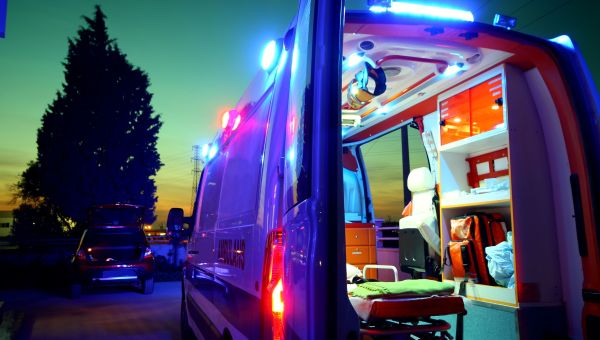
Your neighbor's Halloween decorations likely won't spook you to death, but real—and, for the most part, preventable—dangers do lurk during this fall festival. Out of eight holidays tracked, Halloween had the fifth highest number of emergency room visits among children 18 years and under, according to data compiled from 2007 to 2015 by the National Electronic Injury Surveillance System.
From wardrobe malfunctions to burns caused by candle-lit decorations, Christopher Crowell, MD, an emergency room physician with StoneSprings Hospital Center in Dulles, Virginia, reveals some of the most frightful dangers to look out for—plus, tips to keep the holiday filled with fun, friends and even a treat or two.

Carving with a kitchen knife
After your family's trip to the pumpkin patch, there's but one thing to do with your hand-picked gourds—carve them!
"I've treated people with major arterial injuries in the hand and fingers," Dr. Crowell says. These lacerations tend to be sustained while carving pumpkins with sharp kitchen knives. "They happen when people are trying to poke something out the other side of the pumpkin." This may be more likely among those attempting to adorn their pumpkins with intricate designs.
Carving injuries happen, but many can be prevented by using carving kits designed specifically for pumpkins. These blunt-edge tools are typically shorter and less likely to pierce skin, muscle and cartilage. It’s also advisable to create your masterpiece in a dry and well-lit area and it’s always safest for young ones to avoid carving. Instead, let them express their creativity with paint and markers and leave the carving to adults.
Should a laceration occur, it's important to take immediate action, first by applying firm pressure to the area with a clean cloth or sterile gauze and holding the injury above the heart. If bleeding persists after 10 minutes, if the cut is deep or you’re unable to use the injured body part, seek medical attention. You should also see a medical professional if a rusty knife or tool caused the injury or if you haven't had a tetanus shot within the last 10 years.
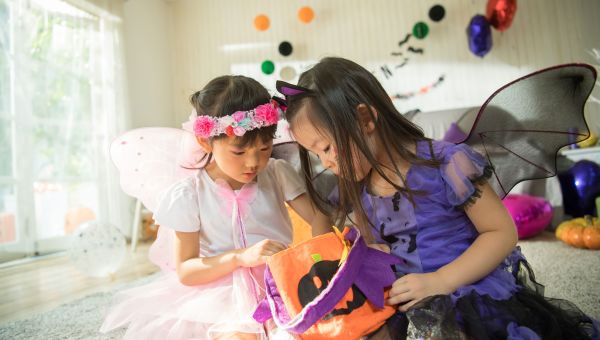
Lurking food allergens
"The most common problems I see are reactions to candy," Crowell says. "I've seen some pretty serious peanut allergic reactions, where a children's airways are closing up."
An estimated 4 to 6 percent of U.S. children have food allergies of some kind. More than 160 foods can cause an allergic reactions, but just eight eats—eggs, fish, shellfish, soybeans, milk, wheat, peanuts and tree nuts—cause about 90 percent of all reactions.
On a quest for a sugar high, a child may inadvertently ingest a treat he or she is allergic to, which can cause a reaction that ranges from a mild rash all the way to anaphylaxis, a severe and life-threatening reaction that blocks airways and can send the body into shock. If a child—with or without a known food allergy—experiences symptoms like mouth swelling, abdominal cramps or wheezing after ingesting candy or food, seek immediate medical attention.
If your kiddo has an EpiPen, administer the medication without delay and head to the emergency room. Even if the injection eased symptoms of the attack, your young one should still be cleared by a healthcare provider.
If your young one has a known food allergy, sorting through a child's stash to remove "unsafe" eats can be helpful for avoiding a reaction. Some popular Halloween candies, like Skittles and Starburst, are typically allergy-friendly, but parents should always check the package ingredients.
It's advisable to monitor and limit your child's candy consumption, as excess calories and added sugars can pave the way for weight gain and be especially concerning for young ones with diabetes. Too many sweets and too little flossing can also increase the risk of dental cavities.
While trick or treating, parents can also seek out doorsteps adorned with teal pumpkins. As part of the Teal Pumpkin Project, these homes hand out non-food treats like toys, pencils and notebooks to children with allergies.
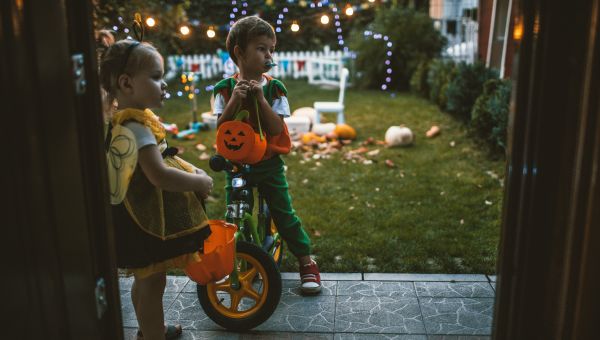
Trick-or-treating after dark
"I haven't personally seen the tragic fatality of a kid getting backed over by a car," Crowell says. "That's probably the most feared Halloween injury and it certainly happens."
Over the course of 2016, 7,330 pedestrians were killed in a car accident on the road or in a driveway or parking lot. Poor visibility and dim lighting frequently played a role in these incidents. Unintentional injuries and deaths involving children and motor vehicles spike during Halloween.
In fact, an October 2018 study published in JAMA Pediatrics found the relative risk of a pedestrian death jumps by 43 percent on Halloween night. The study also showed young children between 4 and 8 years old are particularly vulnerable.
For the study, researchers examined four decades of national data, comparing the number of pedestrian deaths that took place between 5:00 p.m. and 11:59 p.m. on every October 31st from 1975 to 2016 with the deaths that occurred on a typical night the week before and the week after Halloween. The team found that 851 deaths took place on the 84 “normal” evenings but 608 pedestrian fatalities were reported on the 42 Halloween nights included in the study. The researchers concluded that, on average, four additional deaths occur on Halloween each year. They noted that dark costumes, masks that impair vision and dim lighting are among the potential hazards that trick-or-treaters face.
While Crowell has been fortunate enough not to have treated a serious collision injury, he has seen instances in which children on bicycles have been hit by cars backing out of driveways, resulting in broken limbs.
You can reduce the likelihood of being involved in a tragedy by doing your trick-or-treating in daylight, Crowell recommends. Other safeguards include:
- Adding reflective tape or glow sticks to costumes
- Carrying a flashlight
- Using crosswalks and looking both ways before stepping into the street
- Walking on the sidewalk whenever possible

Blazing Jack-o'-lantern burns
Candle-lit jack-o'-lanterns are about as festive as Halloween decorations get, but they're among the most dangerous, too. An estimated 860 fires caused by Halloween decorations were reported each year, on average, between 2009 and 2013, according to the National Fire Protection Association. These blazes were to blame for an average of one death and 41 injuries annually.
Crowell has witnessed firsthand the destruction holiday flames can cause. "I have treated burn cases where somebody tripped and fell on a pumpkin," he says.
There are a few ways to reduce the risk of burns and related property damage, including swapping traditional tealights for battery-operated candles or glow sticks. If candles are a must, they should be displayed on a sturdy table away from curtains and other flammable items and far removed from the pathway of trick-or-treaters.
Parents should also purchase flame-retardant costumes and advise children to steer clear of jack-o'-lanterns and other candle-lit adornments.
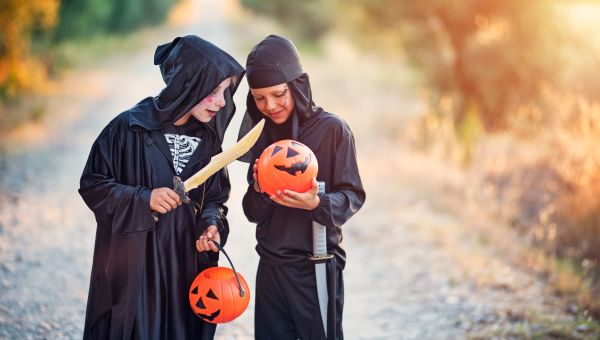
Costume catastrophes
Crowell is no stranger to injuries caused by ill-fitting costumes, having treated a few. "Kids are running around in ghost outfits that are too large and can trip and break wrists or elbows," he says.
Falls can cause minor afflictions like bumps, scrapes and bruises. They can also result in head injuries, including concussions, as well as broken bones—both of which require treatment by a medical professional. If a fall causes serious head or neck injury, loss of consciousness, trouble breathing or seizures, seek immediate medical attention. Children with less severe injuries should be monitored closely for the next 24 hours and taken for an evaluation if unusual symptoms arise.
There are ways to reduce young kids’ risk for these types of injuries, including:
- Dressing your children in well-fitting costumes that don't drag on the ground
- Fastening shoes tightly, and retying laces as often as necessary
- Choosing face masks that don't obstruct a child's vision or using face paint instead
Face paint should first be tested on a small area of skin prior to getting into costume in case your child has an adverse reaction. Hats should also fit snugly without blocking vision and decorative contact lenses—which can cause permanent eye damage—should be avoided altogether. Accessories, like swords and sticks, should be short and flexible to reduce risk of poking should a young one take a tumble.

Smashing pumpkins
Not all Halloween injuries happen the way you might think. Although they are meant to be stationary, pumpkins can fall from porches, ledges or windowsills—or even be thrown intentionally.
Not only can a falling pumpkin lead to a splattered mess, but a blow delivered to the head by such a heavy object could cause a brain bleed, Crowell explains. Hemorrhages can happen within the brain tissue or just under the skull, putting pressure on the brain. These types of injuries are a medical emergency and can be life-threatening.
Injuries caused by flying pumpkins are uncommon, but head trauma caused by other accidents—such as bicycle or car accidents—happen a bit more frequently. Symptoms of a brain bleed can arise immediately after injury or make an appearance even weeks later. They include a worsening headache, dizziness, confusion, vomiting or loss of consciousness. These signs should be assessed by a medical professional immediately; delaying treatment can lead to permanent damage, or worse.
If you're riding your bike this Halloween, wear a helmet; if you're celebrating the holiday with a cocktail or two, find yourself a sober driver. Pumpkins are surprisingly heavy and can do serious damage when sent airborne, so make sure they stay on doorsteps where they can be admired.
More On


video

article
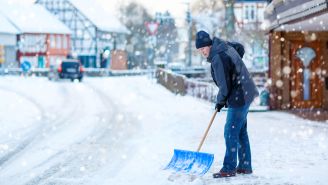
slideshow


video


video
